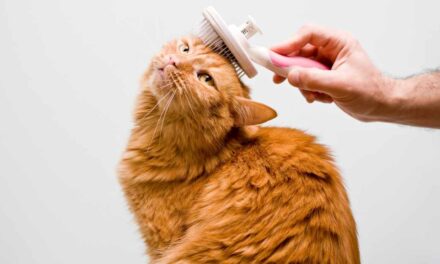Cats are wonderful companions, known for their independence and playful personalities. But owning a cat comes with responsibilities, and being a great cat owner means understanding their unique needs. Whether you’re a first-time cat owner or a seasoned pet lover, there are key steps you can follow to ensure your cat leads a happy, healthy life.
1. Choose the Right Cat for Your Lifestyle
Before bringing a cat into your home, it’s essential to consider your lifestyle. Not all cats have the same temperament, energy levels, or care needs.
- Kittens vs. Adult Cats: Kittens are energetic and playful but require more attention and training. Adult cats, on the other hand, may already be litter-trained and more independent.
- Breed Considerations: Some cat breeds, like Siamese or Bengal cats, are highly active and social, requiring more interaction. Others, like the Persian or Ragdoll, may prefer a more laid-back environment.
- Adoption: Consider adopting from a shelter, where cats of all ages and backgrounds are waiting for a loving home. Rescue cats can be incredibly rewarding to care for.
2. Provide Proper Nutrition
Feeding your cat a balanced diet is crucial to their overall health. Cats are obligate carnivores, which means they need nutrients from animal-based sources.
- Quality Cat Food: Choose a high-quality commercial cat food that contains the right balance of protein, fats, and vitamins. Both wet and dry food have benefits, but wet food can help with hydration.
- Avoid Harmful Foods: Never feed your cat foods like chocolate, onions, garlic, or alcohol. These can be toxic to cats and lead to serious health problems.
- Fresh Water: Always provide fresh, clean water. Cats often prefer moving water, so a cat water fountain can encourage them to drink more, which helps prevent urinary tract problems.
3. Create a Safe and Comfortable Environment
Your cat’s environment plays a big role in their well-being. They need a space that feels safe, comfortable, and stimulating.
- Litter Box Setup: Make sure you have at least one litter box per cat, placed in a quiet, accessible location. Clean the litter box daily to keep it fresh, as cats are very particular about cleanliness.
- Scratching Posts and Climbing Areas: Cats love to scratch and climb. Provide scratching posts to help keep their claws healthy and prevent them from scratching furniture. Cat trees or shelves give them vertical space to explore and feel secure.
- Cozy Spots: Cats enjoy having cozy, quiet places to retreat. Provide soft beds, blankets, or even a dedicated space like a cat igloo where they can rest undisturbed.
4. Prioritize Veterinary Care
Regular vet visits are essential to ensure your cat stays healthy. Prevention is always better than treatment when it comes to common health issues.
- Vaccinations: Keep up with your cat’s vaccinations to protect them from diseases like feline leukemia, rabies, and respiratory infections.
- Spaying/Neutering: Spaying or neutering your cat not only helps control the pet population but can also prevent behavioral issues and certain health problems.
- Flea and Parasite Control: Use flea prevention treatments, and regularly check for parasites like worms. Your vet can recommend safe and effective options.
- Annual Check-ups: Schedule annual check-ups to monitor your cat’s health, even if they appear fine. Cats are known to hide illnesses, so regular vet visits can catch potential problems early.
5. Engage Your Cat with Mental and Physical Stimulation
Cats need more than just food and shelter to thrive. Mental and physical stimulation is essential for their well-being.
- Playtime: Interactive toys like feather wands, laser pointers, or puzzle feeders can keep your cat entertained. Regular playtime also helps prevent boredom and obesity.
- Catnip and Treats: Catnip can be a fun way to engage your cat in play, while treats can be used for training and positive reinforcement. Just be mindful of portion sizes to avoid overfeeding.
- Environmental Enrichment: Rotate toys to keep things fresh and engaging. Window perches provide entertainment, as cats love to watch birds or people outside.
6. Foster Social Bonds
Cats may have a reputation for being independent, but they can form strong bonds with their owners. Creating a positive relationship with your cat is key to being a great cat owner.
- Petting and Cuddling: Learn your cat’s preferences. Some cats love to be petted and cuddled, while others may only want affection on their own terms. Respect their boundaries to build trust.
- Respect Personal Space: Cats need alone time. If your cat retreats to a quiet corner, give them space until they’re ready for interaction.
- Positive Reinforcement: Use treats and praise to encourage good behavior, such as using the litter box, not scratching furniture, or coming when called.
7. Understand Feline Behavior
Being a great cat owner also means understanding your cat’s body language and behavior. Cats communicate through their tails, ears, and eyes, as well as through vocalizations.
- Tail Language: A raised tail usually signals a happy cat, while a puffed-up tail indicates fear or aggression.
- Purring and Meowing: Purring often means contentment, though cats may also purr when they’re anxious or in pain. Pay attention to changes in your cat’s meows, as excessive or unusual vocalization could indicate a problem.
- Signs of Stress: Watch for signs of stress, such as hiding, excessive grooming, or changes in appetite. Stress can be triggered by environmental changes or even boredom.
8. Keep Your Cat Indoors or Supervised
Outdoor cats face many dangers, from traffic to predators and diseases. Keeping your cat indoors can help them live a longer, healthier life.
- Outdoor Enclosures: If your cat loves being outside, consider providing a safe outdoor enclosure or taking them for walks using a leash and harness.
- Supervised Outdoor Time: Supervised outdoor time allows your cat to explore safely. Never let your cat roam freely in unsafe environments.
Being a great cat owner means providing your feline friend with love, care, and attention. From proper nutrition to mental stimulation, veterinary care to understanding their behavior, every aspect of your cat’s life contributes to their happiness and well-being. When you build a strong bond with your cat and meet their needs, you’ll have a loyal, loving companion for years to come.



